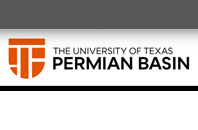
Publications & Presentations
An Analysis of Higher Education Facility Expansion
Document Type
Article
Publication Date
Fall 2018
Abstract
America's colleges and universities have expanded campus facilities by renovating and increasing square footage. This is in contrast to general construction activity during the same time period. This quantitative study investigates the relationship between university and college campus facility square footage per Full Time Equivalent (FTE) and university enrollments, institution endowments, and tuition and fees. Dummy variables were created for Carnegie classification and whether the college or university was private or public. Literature documents concern that these increased and upgraded facilities may become overbuilt and thus become liabilities to the institutions. Square footage data gathered over a five-year period from college and university administrators were regressed against enrollment, endowment, tuition, and fees for the same time period (2002-2007). Results show a relationship between university square footage per FTE and endowments per FTE and tuition. The relationship between enrollment and square footage per FTE indicates that total square footage increases with enrollment, however at a lower rate than enrollment. This indicates that administrators may act rationally using this empirical data as suggested in teleological theory. However, the results also show that this theory cannot explain all the increases in campus square footage. It leaves room for such theories as arms race theory and public choice theory. This study adds to the body of knowledge regarding the motivation of administrators to increase campus facility square footage and creates a predictor model for administrators to compare institutions.
Recommended Citation
Chapman, J. D., MacDonald, S. T., Arnold, A. G., & Chapman, R. S. (2018). AN ANALYSIS OF HIGHER EDUCATION FACILITY EXPANSION. Journal of Business and Educational Leadership, 8(1), 66-85. Retrieved from http://ezproxy.utpb.edu/login?url=https://www.proquest.com/scholarly-journals/analysis-higher-education-facility-expansion/docview/2136872297/se-2?accountid=7137

